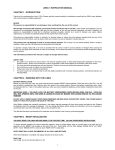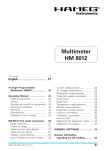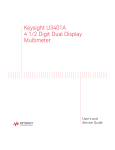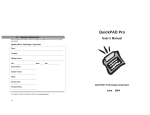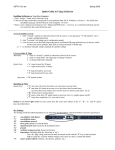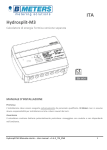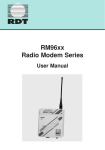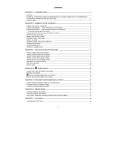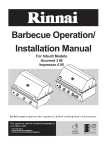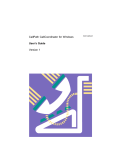Download Owner`s Manual
Transcript
CONTENTS CHAPTER 1 - INTRODUCTION...........................................................3 NOTICE............................................................................................3 SAFETY TIPS...................................................................................4 CHAPTER 2 - WORKING WITH DAVINCI...........................................5 BATTERY INSTALLATION...............................................................5 RESET INITIALIZATION...................................................................5 HOME AND WORLD TIME...............................................................6 SETTING DATE AND TIME..............................................................7 DAILY ALARM..................................................................................8 PASSWORD ....................................................................................9 CHAPTER 3 – GETTING TO KNOW YOUR DAVINCI.......................10 PART NAMES AND FUNCTIONS ..................................................10 APPLICATION ICON TOUCH MENU .............................................11 CONTROL TOUCH KEYS ..............................................................12 QUICKKEYS™ ...............................................................................12 DISPLAY INDICATORS..................................................................14 OPENING AN APPLICATION.........................................................15 THE DAVINCI CRADLE..................................................................15 CHAPTER 4 – TOOLS MENU ...........................................................16 USING THE ‘ADD NEW RECORD’ FEATURE ...............................16 USING ‘EDIT RECORD’ FEATURE................................................16 USING ‘SEARCH RECORD’ FUNCTION .......................................17 USING ‘DELETE RECORD’ FUNCTION ........................................17 CHAPTER 5 - ON-SCREEN KEYBOARD DATA ENTRY .................18 USING THE ON-SCREEN VIRTUAL KEYBOARD..........................18 INTERNATIONAL CHARACTERS..................................................18 CHAPTER 6 - PHONE BOOK ...........................................................19 PHONE LIST MODE.......................................................................19 CREATING, EDITING AND DELETING PHONE RECORDS..........19 1 FINDING PHONE RECORDS.........................................................20 VIEWING PHONE RECORDS........................................................21 CHAPTER 7 - PLANNER..................................................................22 CALENDAR FUNCTION.................................................................22 SCHEDULE FUNCTION.................................................................24 CREATING, EDITING AND DELETING SCHEDULE RECORDS ...24 ANNIVERSARY FUNCTION...........................................................26 CHAPTER 8 - TO DO ........................................................................27 TO DO LIST MODE ........................................................................27 CREATING, EDITING AND DELETING TO DO RECORDS ...........28 FINDING TO DO RECORDS ..........................................................28 VIEWING TO DO RECORDS .........................................................28 CHAPTER 9 – NOTES.......................................................................29 CHAPTER 10 - CALCULATOR .........................................................30 CHAPTER 11 - CONVERSIONS........................................................31 METRIC CONVERSION .................................................................31 CURRENCY CONVERSION...........................................................31 EURO CONVERSION ....................................................................32 CHAPTER 12 - MENU ......................................................................33 PC SYNCRONIZATION..................................................................33 SYSTEM PREFERENCES .............................................................36 MEMORY .......................................................................................36 DEFRAGMENTATION (DEFRAG)..................................................36 APPENDICES....................................................................................37 A. B. C. DAVINCI FOLDABLE KEYBOARD INSTRUCTIONS ...........37 TROUBLESHOOTING DAVINCI ..........................................38 TROUBLESHOOTING DAVINCI SYNCHRONIZATION .......39 2 CHAPTER 1 - INTRODUCTION Thank you for purchasing the daVinci PDA. Please read this manual carefully to familiarize yourself with the PDA’s many features, and to ensure years of reliable operations. NOTICE We assume no responsibility for any damage or loss resulting from the use of this manual. We strongly recommend that separate, permanent printed records be kept of all data. Under certain circumstances, such as exposure to an electrostatic discharge, data may be lost or altered, or the unit may become inoperative until reset. Therefore, we assume no responsibility for data lost or otherwise rendered unusable, whether as a result of improper use, repair, battery replacement, or use after the specified battery life has expired from similar causes. We assume no responsibility, directly or indirectly, for financial losses or claims from third persons resulting from the use of this product and all of its functions, such as stolen credit card numbers, the loss or alteration of stored data, etc. This product was not designed to bend or survive extreme pressure. Do not carry it in your trouser pockets. When in a bag or briefcase, make sure that it is stationary and well padded and protected. To provide a longer product life, a lid cover is provided with the daVinci in order to avoid scratches or damage when carrying the product. Do not apply harsh chemicals or water to the display. Do not store the product in environments where temperature ranges can be extreme. The information provided in this manual is subject to change without notice. 3 SAFETY TIPS • Be careful not to scratch the touch screen. Use only the supplied stylus or other plastic-tipped pens designed for the touch-sensitive screen. Never use an actual pen or pencil, fingernails or other sharp objects on the surface of the touch screen. • The daVinci should be protected from rain and moisture. Treat the daVinci as you would other electronic devices. • Do not drop your daVinci or subject it to strong impacts. • Protect your daVinci from extreme temperatures. • The touch screen can be cleaned with a soft cloth lightly moistened with a window cleaning solution. Commercial cleaners are sold separately. 4 CHAPTER 2 - WORKING WITH DAVINCI BATTERY INSTALLATION Before you start using the daVinci, you must install the two included AAA alkaline batteries. The battery door, located on the back of the unit, is locked into place. 1. Remove the battery cover by pressing the hinge down and pulling the battery cover open. 2. Insert the two new batteries, following the signs inside the battery compartment. 3. Carefully place the battery cover in its place and press the cover gently into its location until cover is locked in position. DO NOT APPLY UNNECCESARY FORCE WHEN REMOVING OR REPLACING THE BATTERY COVER. THE COVER SHOULD EASILY FIT INTO ITS PLACE IN THE BACK OF THE UNIT. Note: Battery voltages are constantly monitored; a low battery warning message will show when power level gets too low. Replace the batteries when this message is displayed. You can change the battery without losing any information. Do not try to operate or synchronize the daVinci with a low battery; data can be corrupted or lost. The data that has been synchronized to the computer can be restored to the daVinci by synchronizing again. For detailed software use instructions, see the “help and instruction files” provided with the synchronization software. YOU MUST RESET THE DAVINCI BEFORE USING IT FOR THE FIRST TIME. FOLLOW THESE RESET INSTRUCTIONS: RESET INITIALIZATION 1. Insert an open paper clip into the reset opening on the backside of the unit. The daVinci language selection screen is displayed. 2. Tap the desired language. 3. Tap YES to clear all data (necessary when using the daVinci for the first time only). 5 NOTE: RESET WILL CLEAR THE MEMORY OF ALL DATA AND SETTINGS. When the initialization is complete, the display switches to the clock screen. Adjust the display contrast by turning the display contrast knob located on the left side of the unit. HOME AND WORLD TIME This screen is used to select and set the Home City, Home Time and World City. Display this screen at anytime by tapping Menu and then Time. Note: An image of a house on the left side of the time indicates Home Time mode. 6 SETTING DATE AND TIME To set the correct time in the Home Time mode, tap the set prompt located at the lower left part of the display. Tap the date, time, city and DST fields frame to edit that field. Editing Date 1. In the Home Time setting mode, tap the date for the date selection view. 2. Change the year by tapping on the right or left arrows next to the year. 3. Select the desired month and date from the provided lists. 4. Verify that the date and year at the upper part of the display corresponds to the desired date and year. 5. Tap ok to confirm. Editing time 1. In the Home Time setting mode, tap the time frame for the time selection view. 2. Select the desired hour and minute from the lists. If in 12-hour clock mode, tap AM or PM as preferred. In the minute field, tap the up or down arrows for one-minute increments. 3. Verify that the time at the upper part of the display corresponds to the desired time. 4. Tap ok to confirm. Selecting Home City To select a country and city for Home Time mode: 1. Tap on the city name, New York U.S.A., to enter the Country and City list selection. 2. Tap any of the letter tabs on the lower part of the display to quickly access and display a city and country. Use the up/down touch keys or push QuickKeys™ to scroll through the country and city list. Tap the city tab on the lower right to sort world cities alphabetically. 3. Tap the selected city in the list to make it the city showing in the Home Time mode or enter a city not listed. To define a home city that is not listed, follow these instructions: 7 1. 2. 3. Double tap the city name listed, example city: New York country: U.S.A., to enter the Country and City list selection. Select a listed city that is within the same time zone as your desired home city. Tap Tools to edit the city and country/state fields. Enter a new city and/or country name to replace the current country and the city, example: city: Bridgewater, state: N.J. Tap Enter or ok to save the entry. The screen returns to the time setting screen. The new country/state and city are displayed. Setting Daylight Savings (DST) In the home time setting screen, tap DST to turn Daylight Savings on or off. When turning DST on, the displayed time will increase one hour. Setting World City 1. Tap Time and then set. 2. Tap home on the lower right side of the display. A globe is now displayed on the left side of the time indicating World Time mode. 3. Follow same procedure used for the home city to select world city. Viewing Home Time and World Time Home time and world time can be viewed from any function by pressing the Menu and then Time key. Tap home/world on the lower right part of the display to toggle between Home Time or World Time modes. DAILY ALARM To set the daily alarm: 1. Tap Menu, Alarm for the daily alarm screen. 2. Touch set to enter a new alarm. 3. Select the alarm time as in Editing Time above. 4. Tap the On/ Off key to activate/deactivate the alarm time. 5. Tap ok to save the settings. When home time reaches the time set for the daily alarm, the alarm tone will beep for 1 minute and the alarm reminder screen will come up. Tap anywhere on the screen to stop the sound. The alarm is activated if the daVinci is off or on. 8 PASSWORD You can assign a password to the daVinci. For security purposes, the entire unit can be locked from normal view or use unless the proper password is entered. Keep a record of your password! IF YOU FORGET YOUR PASSWORD THERE IS NO WAY TO ACCESS ANY HIDDEN RECORDS. THERE IS NO "BACK DOOR" INTO THE SYSTEM. YOU MUST RESET THE DAVINCI AND CLEAR ALL MEMORY. Assigning a Password 1. Tap Menu, Password. 2. The daVinci will prompt you to enter a new password. 3. Use the virtual keyboard to enter the password. The characters will be shown as ** during entry. 4. Tap Enter or ok. 5. The daVinci will prompt you to confirm the new password by entering the password again. 6. After entering password again, tap ok. Password is now assigned. Entering password is required every time the daVinci is turned on. Tap the box with the word off in the System Preference to deactivate the password protection. Tap the box with the word on in the System Preference to activate password protection again. Changing a Password 1. Tap Menu, Password. 2. The daVinci will prompt you to enter your existing password. 3. Use the virtual keyboard to enter the password. 4. Tap Enter or ok. 5. The daVinci will prompt you to enter a new password. 9 Chapter 3 – GETTING TO KNOW YOUR daVinci PART NAMES AND FUNCTIONS Display Protection Cover Stylus Housing Display Indicators Touch Panel Area QuickKeys™ include Up/Down and Enter keys Control Touch keys Contrast Control Application Icon Touch Menu Keyboard Connector Directional Arrows 10 APPLICATION ICON TOUCH MENU The daVinci has a variety of built-in applications that can be selected by using the stylus to tap the application icon on the touch menu. Phone is a database of contact information, including name, address, phone numbers, etc. Information of each person will be stored as a record. Phone records can be grouped into Business or Personal categories for easy access. To Do is used to store a list of tasks. It can record the description, priority and deadline of the task. Planner allows you to plan your schedule and store it in memory. It provides the flexibility of planning a schedule with reference to monthly calendars and daily times. Notes stores alphanumeric notes with the virtual on-screen keyboard or the external keyboard. Calc is a full function 12-digit calculator. You can easily access the currency and metric conversion features through the calculator mode. Menu displays additional functions that can be used by tapping the icon that represents that function. Current functions include: Time, Alarm, Anniversary, Password, PC Synchronization and more. 11 CONTROL TOUCH KEYS The control touch keys are located above the Application Icon Touch Menu. This touch-sensitive area provides control of the data input and program operations. Glo (LightBulb) Turns the backlit on for low light or night viewing. Esc Cancels entries. Tools The Tools menu displays the commands: Add new record, Edit record, Search record or Delete record. See further information in Chapter 4: TOOLS MENU. Up/Down Used when the information in a record exceeds the screen length. The icons are tapped to move the display a page at a time. B/P Selects the category: Business, Personal or both. OK Confirms entries and operation selections. On/Off Symbol Turns the unit on or off. QUICKKEYS™ The QuickKeys™ are designed to enable access to phone records using one hand operation: Up/Down Control Keys Scrolls one line at a time. Enter Key Confirms entries and operation selections. Left/Right and Page Up/Page Down Directional Keypad 12 Used to scroll a list in Phone, To Do, Planner and Memo functions. 13 DISPLAY INDICATORS Different symbols will appear on the top of the screen to indicate a status and special actions that can be taken. The upper line’s display Indicators specify which application is currently active. The lower lines’ display Indicators specify if the unit is in List, Edit or Data view, in the Search mode, if the alarm is on, if the password is activated, which category is viewed (Business, Personal or both) and if there is additional data available by scrolling up or down. Scrolling Status Indicator When using the full length of the screen, the display will show up to 9 lines of data. If one or both of the arrows appear in the top title section, it indicates there is more to see in the direction of the arrow. To see the data, use the stylus and tap the point of the up/down control icons or the up/down control keys to move the screen a page at a time or press the up/down keys on the directional keypad to move the screen information one line at a time. 14 OPENING AN APPLICATION To open an application, tap on its corresponding icon on the Application Icon Touch Menu at the bottom of the screen. The application selected will open showing the list of records stored for that application. The corresponding display indicator icon will be shown. Each application has a List view, Edit view and Data view mode. List View Mode Whenever an application icon is tapped the record’s index list will be shown. The index shows each record in list format. The exception to this is the Planner application when is displayed in a monthly view. From the Planner application you can access Schedule, To Do and Anniversary. Edit View Mode After highlighting a record in List view mode or viewing a record in Data view mode, tapping Tools, New Record, or Tools, Edit Record puts the screen in Edit view mode. The on-screen keyboard will appear enabling data entry and editing. Data View Mode Tap a listed record twice to switch to the record data view screen showing the details of the selected record. THE DAVINCI CRADLE The daVinci cradle is designed to hold the daVinci at a comfortable viewing angle on your desktop and to provide a connection to your PC. To place the daVinci into its cradle, slide the daVinci down into the cradle. The two rails on the side of the cradle fit into the recessed slits on the two sides of the daVinci. These will keep the unit stationary in the cradle. For more information about using the cradle for PC synchronization see Chapter 12: MENU and go to section PC SYNCHRONIZATION. 15 Chapter 4 – TOOLS MENU When IN the List view mode for Phone, To Do, Planner, Notes or the Anniversary application, tap this option for the Tools menu. The Tools menu includes: Add new record Edit record Search record Delete record USING THE ‘ADD NEW RECORD’ FEATURE The ‘Add new record’ feature puts the application selected into Edit view mode for creating a new entry. Creating a New Record: Select the application for the new record by tapping its icon. 1. 2. 3. 4. Tap Tools, and then Add new record. A cursor is displayed in the first data field of your selected application. Use the on-screen or external folding keyboard to enter data and to navigate between fields until all record information is complete. Note that the field name (e.g., Last Name, First Name, Company, etc.) will disappear when the first character is inserted into the field. Use the directional arrows to navigate between and within the fields or tap the desired field with the stylus. When you have finished entering all the desired data into the record, save the completed record by tapping Enter or ok. USING ‘EDIT RECORD’ FEATURE When attempting to modify an existing record, use the Edit feature. Editing a Record: 1. Select the List mode for the application to edit a record. 16 2. 3. 4. Tap on the specific record you wish to edit, and then tap Tools, Edit record or When viewing a specific record in the view mode, tap the Tools, Edit record. Make appropriate changes to the record. Saving the Changes Tap Enter or ok to save the changes to the record. If any other application is selected before saving or the Esc function is selected before saving, the unit will prompt, “Save? YES, NO”. Tapping YES saves the changes. Tap Esc to return to the Record Edit mode. Tap NO to continue operations without saving the record. Insert Mode Use the stylus to tap and locate the cursor to the insert location. Characters will be entered and displayed to the left of the blinking cursor. USING ‘SEARCH RECORD’ FUNCTION Select this function when looking for a specific record. The fields to be searched are different depending on which application is searched. See more information in sections describing specific applications. USING ‘DELETE RECORD’ FUNCTION Once a record has been highlighted in the Applications List mode, or in the Records View mode, you can delete it from memory. To Delete a Record in the List Mode: 1. Select the List mode for the application to delete a record. 2. Tap on the record you wish to delete. 3. Tap Tools, Delete record. 4. The daVinci will prompt, ”Delete? YES, NO”. 5. Tap YES if you wish to delete the record, Tap NO if you wish to cancel the deletion. 17 Chapter 5 - ON-SCREEN KEYBOARD DATA ENTRY You can use the virtual on-screen keyboard or the daVinci external folding keyboard for data entry. For more information about data entry using the external folding keyboard – see appendix. USING THE ON-SCREEN VIRTUAL KEYBOARD When entering the Edit mode of any application the virtual keyboard will automatically appear on the bottom of the touch-sensitive screen ready for instantaneous input. Tap the character keys to input each character. CAP (caps lock), (shift key), INS (insert), (back space), Return symbol (return key) work the same as a PC keyboard. INTERNATIONAL CHARACTERS 1. Touch the Int’ key on the on-screen virtual keyboard to activate the international character keyboard. 2. Touch the Int’ key again to return to normal character keyboard. 18 CHAPTER 6 - PHONE BOOK Tap this icon to activate the Phone application. This application allows you to keep names, addresses, phone numbers, email address and other information about your contacts. PHONE LIST MODE A Phonebook record consists of: 1. Last name 2. First name 3. Company 4. Title 5. Home 6. Work 7. Fax 8. Mobile 9. Pager 10. Email/Web address 11. Address 12. City 13. State 14. Zip 15. Text note 16. Category: Business/Personal To view the Phone list, tap the phone icon on the Application Icon Touch Menu located at the bottom of the screen area. Phone list view shows the list of names, sorted alphabetically according to each name “Last Name, First Name” stored in the record’s name field. To view the phone list sorted by Company name, tap ‘Name’ at the lower right side of the display (next to letter tab in the phone list). CREATING, EDITING AND DELETING PHONE RECORDS Add a new record 1. Tap Tools, Add new record. 2. The cursor and virtual keyboard is ready for you to start entering characters in the last name field. 19 • 3. As soon as data is being entered into a field, the field name disappears leaving the field icon on the beginning of the line to remind you which field you are currently editing. • Use the stylus to tap a new input location. • Use the Up/Down keys to move the cursor to a different line. • Use the Return key if more than one line of text is required. • Tap Page Up/Page Down to see more fields. • Tap the category box to assign the record to the business or personal category. Default category is set in the System Preferences Menu (see Chapter 12: MENU). Tap Enter or ok to save the information and return to the List mode. Edit record 1. To edit a specific record, tap the record then tap Tools, Edit record. 2. Tap the field requiring editing. 3. Enter new information. 4. Tap Enter or ok to save the information and return to the list mode. Delete record 1. To delete a record, tap the record then tap Tools, Delete record. 2. Tap YES to remove the record. FINDING PHONE RECORDS There are several ways to find phone records in the Phonebook application. They are as follows: • Tap the alphabet tabs on the bottom of the list to quickly move to the beginning of that group of letters. • Press the up/down keys to scroll through a long list of contacts. • Press the Page up/Page down key to scroll each page of the list at a time. • Tap “B/P” on the Control Touch Keys to select the Business or Personal category name to be viewed. The category name appears on the top of the display. B marks records stored under the 20 • Business category, P marks records stored under the Personal category and B P marks records stored under both categories. Use the search option in the Tools menu. To use the Search option: 1. Tap Tools; select Search record. 2. Enter the desired text for search in the corresponding field. Searching function is prioritized by the order of fields. 3. Tap the desired record in the Search Result list. VIEWING PHONE RECORDS Switch from a phone list view to an individual record view by double tapping the corresponding record. • • Touch the Up/Down arrows to see more fields. To go back to the list view, touch Esc or ok. 21 CHAPTER 7 - PLANNER Tap this icon to activate the Planner mode. Planner allows you to schedule and view plans. Planner has four functions: Calendar, Schedule, Anniversary and To Do. CALENDAR FUNCTION The Calendar function is used to view a full month of Schedules, Anniversary, and To Do activities. Icons next to a specific date indicate the type of events specified for that date: • A dot on the upper right of a date indicates an existing morning Schedule event for that date. A dot on the lower right of a date indicates an existing afternoon Schedule event for that date. • A bar on the right of a date indicates an existing Anniversary event for that date. • A slash on the upper left of a date indicates an existing To-do event for that date. Details of a To Do activity and an Anniversary to the highlighted date are viewed at the lower part of the display. View additional To Do or Anniversary items click the arrow next to the visible details. Tap any detailed event to view that event. 22 Finding the Desired Date in the Calendar • Press the Up/Down, Left/Right keys to navigate within a given month. • Press the Page up/Page down keys or touch the arrows next to the month shown above the calendar to scroll one month at a time. • Touch the arrows next to the year shown above the calendar to scroll one year at a time. • Above the calendar, tap the arrow next to the date to go to a date selection view. Specify the year and tap the desired month and date in the date selection view. Touch ok to go to the specified date. Tools Options in Calendar You can add a planner record or search a planner record using the Tools menu in the Planner. Tap desired add or search to go to that function in the selected application. 23 SCHEDULE FUNCTION Schedule shows a list of appointments or other schedule events. Tap a highlighted date in the Calendar to go to that date’s Schedule list view. Tap Esc in the Schedule list view to go back to Calendar. In the Schedule list view, details of a To Do activity and an Anniversary for the selected date are viewed at the lower part of the display. View more To Do or Anniversary items for that date by clicking on the corresponding arrow next to the visible details. Tap any detailed event to go to the Record view mode for that event. CREATING, EDITING AND DELETING SCHEDULE RECORDS Add a New Record 1. In the Calendar view, tap the Tools, Add Schedule or in the Schedule list view tap Tools, Add new record. 2. To adjust the start or end date of a schedule record, tap the date field and select the desired date, then tap ok. 3. To adjust the start or end time, tap the time filed and select the desired time. Note that you can scroll the minute’s arrows or select from the 10 minutes increments list. Tap ok to go back to the schedule event. 4. By default, the alarm is set to the off position. In order to set the alarm, tap on next to the alarm field. 5. Select the category. 6. Enter the details of the schedule event. 7. Tap ok or Enter. Schedule returns to today’s date. Edit Record and Delete Record Follow the procedures used in editing and deleting Telephone records. Finding and Viewing Schedule Records Follow the procedures used in finding and viewing Telephone records. Schedule Alarm Time Actions If the unit is off or running another application, when the scheduled alarm date and time equals the home date and time, the alarm will 24 sound for 1 minute. The scheduler view with the 1st page of the schedule details will be displayed. Tap the screen to stop the sound. 25 ANNIVERSARY FUNCTION This function shows the list of anniversary records. You can access the Anniversary function from the Menu or by clicking the anniversary event details in the Calendar or Schedule views. Finding Anniversary Records Follow the procedures used in finding Telephone records. Viewing Anniversary Records Anniversary records are sorted by date. Tap Date at the lower right side of the display to sort the anniversary list by alphabetical order. Use letter tabs to find the desired anniversary record or use the Search feature. The Search feature follows the same procedures as in searching Telephone records. Create, Edit and Delete Records Follow the procedures used in adding new Schedule records above. Anniversary Alarm Time Actions If the unit is off or running another application, when the Anniversary alarm date and time equals the home date and time, the alarm will sound for 1 minute. The scheduler view with the 1st page of the schedule details will be displayed. Tap the screen to stop the sound. To Do See chapter 8 To Do for instructions. 26 CHAPTER 8 - TO DO Tap this icon to activate and view the To Do list mode. This application allows you to keep track of important tasks. TO DO LIST MODE A record consists of: 1. Priority ranking from 1 to 5 2. Due Date 3. Status of the task: Done/Pending 4. Category: Business/Personal 5. The details of the task To view the To Do list, tap the To Do icon on the Application Icon Touch Menu located at the bottom of the screen area. The To Do list has two columns. The left column shows the priority and the due date and the right contains details of tasks. The sorting order for the To Do item list can be changed as follows: • Tap Date at the lower left screen to sort the list by due date. • Tap P at the lower left screen to sort the list by priority. 27 Items can be viewed by their status in the List view mode. There are three different tabs at the bottom of the touch screen as follows: • Tap All - to display all To Do records (done/pending). • Tap Done - to display those records marked as done. • Tap Pending - to display those records that are not done. CREATING, EDITING AND DELETING TO DO RECORDS Follow the procedures used in creating, editing and deleting Telephone records. FINDING TO DO RECORDS There are several ways to find phone records in the To Do application. They are as follows: • Tap one of the three tabs on the bottom right of the list to view the following options: Done, Pending or All records. • Press the Up/Down keys to scroll through a long list of To Do’s. • Press the Page Up/Page Down keys to scroll each page of the list at a time. • Tap “B/P” from the Control Touch Keys to select the Business or Personal category name to be viewed. Category name appears on the top of the display. B and P mark records stored under Business or Personal categories respectively. B P marks all records. • Use the search option in the Tools menu. To use the Search option: 1. Tap Tools; select Search record. 2. Enter priority, date or desired text to search in the corresponding field. Searching priority is by order of fields. 3. Tap the desired record in the search result list. VIEWING TO DO RECORDS Switch from any To Do list view to display the detailed information of a specific record in the To Do view mode by double tapping the corresponding record. 28 CHAPTER 9 – NOTES – (MEMOS) Tap this icon to activate Note Pad. This application allows for storing text notes or memos. Notes List Mode A note or memo record consists of: 1. Category 2. Details To view the Note list, tap the Notes icon on the touch Menu located at the bottom of the screen area. Notes list shows the list of test memos, sorted by entry date. To view Note list sorted alphabetically tap ‘Date’ at the lower right side of the display. Finding and Viewing Notes Follow the procedures used in finding and viewing Telephone records. Creating, Editing and Deleting Notes Records Follow the procedure used in creating, editing and deleting Telephone records. 29 CHAPTER 10 - CALCULATOR Tap this icon to activate a full function 12-digit calculator. Functions include arithmetic operations (+, -, x, ÷ and %). Memory storage operations such as MR, MC, M+, M-, are also available. Calculations are performed in the order of the entry, not by algebraic conversion. • • • • • • • • “M” on the display indicates a number is stored in Memory. “E” on the display indicates an error: a number longer than 12 digits or when divided by 0. Tap [AC] to clear the error. [C] – Clear the last entered value. Tap twice to cancel calculation. [AC] – All cancel by pressing once. [M+]/[M-] – Adds/subtracts the currently displayed value to/from the current memory contents. [MR] – Recall the numbers stored in memory. [MC] – Clear the number after recall from the memory. [+/-] – Switches the sign between positive and negative. The rightmost column in the calculator view includes all the conversion functions. See Chapter 11: CONVERSIONS for details. 30 CHAPTER 11 - CONVERSIONS Tap the Calculator icon to access the Calculator mode. Metric and Currency Conversions are available in this mode. Conversions are treated as calculator functions. The amount has to be entered in the Calculator mode before selecting the desired conversion function. METRIC CONVERSION For Converting Physical Masurements: 1. Enter the amount to be converted in the calculator mode. 2. Tap the Metric Conversion box in the calculator mode (the second icon from the top in the conversion column). 3. Tap the arrow corresponding to the desired metric conversion and conversion direction. 4. Result is displayed in the Calculator mode. CURRENCY CONVERSION In order to use the currency conversion, first set the exchange rate: 1. Tap the Set Rate box in the Calculator mode (the last icon from the top in the conversion column). 31 2. 3. 4. Tap line of a currency to be set. Enter the value amount of $1 (or one home currency unit if other than a dollar) using the digit keypad on the lower part of the display. Use the backspace arrow to correct entries. When all currencies are set, tap ok to confirm. Currency Conversion is treated as a calculator function. To convert an amount from one currency to another: 1. Enter the amount to be converted in the Calculator mode. 2. Tap the Currency Conversion box in the Calculator mode (the third icon from the top in the conversion column). 3. Tap the arrow corresponding to the desired currency and conversion direction. 4. Result is displayed in the calculator mode. EURO CONVERSION Follow the procedures used in Currency Conversion previously. Note that Euro Conversion rates are set for the given currencies, therefore the Set Currency function does not apply to Euro Conversion. 32 CHAPTER 12 - MENU To access the Menu, tap the "Menu" icon on the Application Icon Touch Menu located at the bottom of the screen area. Menu is composed of the functions: Time, Alarm, Anniversary, PC Sync, System Preferences, Password, Memory and Defrag. TIME AND ALARM See Chapter 2: WORKING WITH DAVINCI. ANNIVERSARY See Chapter 7: PLANNER. PC SYNCRONIZATION In order to perform PC synchronization you must first connect the daVinci cradle to your PC. To connect the daVinci cradle to your PC, turn off your computer and plug the cradle’s cable into the serial communication port on the PC. 33 Note: The daVinci PDA requires a dedicated serial port. It cannot share a port with an internal modem, hand held or any other device. If you are unsure about the exact location of the serial port on your computer, refer to the user's manual supplied with the computer. The CD-ROM included with your unit contains two different software programs. You do not need to install both programs on your PC. DVLink is one of the PC Personal Information Manager (PIM) software programs that is supplied with your unit. You should install this program if you plan to use it as your PC PIM. Otherwise, if you are using Microsoft Outlook or another PC PIM compatible with the daVinci and you wish to continue using that program as your PC PIM, then install the CompanionLink PC software, available on the CD-ROM. See the daVinci package for a list of PC PIM packages compatible with daVinci. DVSync is the program that allows you to synchronize your daVinci’s data with your Personal Information Manager on the PC. The CD-ROM will automatically install DVSync on your PC. Installing the Synchronization Software on Your PC Place the CD-ROM provided with the daVinci PDA into your CD drive and follow the instructions on the PC screen. If the auto-install is disabled on your PC, you will have to manually launch the setup program provided on the CD-ROM as follows: 1. Click Start, Run and then Browse. 2. Locate your CD-ROM drive and select the Setup.exe file. 3. Click OK to run the installation program. DVLink Synchronization Instructions On the PC 1. Verify that the cradle is connected to the serial port. 2. Turn on the PC. 3. If running DVLink for the first time, you need to make sure that the data file is open. To verify that the data file is open, DV Link MYFILE should be visible at DVLink program title bar located the top of the DVLink screen on the PC. If the file is not open, go to 34 4. 5. DVLink file menu and select Open or select New from the DVLink file menu and create a new data file. If you have set the DVSync program to automatically start when you log in to your computer, DVSync should be running. To verify the DVSync program is running on your PC, look at the bottom right hand corner of your PC screen. You should see a DVSync icon located near the area of the PC screen that shows the time of day. This area is referred to as the system tray. If you do not see the DVSync icon in the system tray, select DVLink Synchronize by clicking Programs and then DVLink on the PC Start menu. This will load the DVSync program and you will see the icon in the system tray. On the daVinci 6. Make sure that the unit is well placed into the cradle. 7. Select PC Sync on the daVinci Main Menu. CompanionLink Synchronization Instructions On the PC 1. Verify that the cradle is connected to the serial port. 2. Turn on the PC. 3. If running CompanionLink the first time, you need to select your preferred settings. Select CompanionLink Settings by clicking Programs and then CompanionLink on the PC Start menu. 4. If you have set DVSync to automatically start when you log in to your computer, DVSync should be running. To verify that DVSync is running on your PC, look at the bottom right hand corner of your PC screen. You should see a DVSync icon located in the system tray near the area of the PC screen that shows the time of day. 5. If you do not see the DVSync icon in the system tray, select CompanionLink Synchronize by clicking Programs and then CompanionLink on the PC Start menu. This will load DVSync and you will see the icon in the system tray. 6. A CompanionLink window will appear on your PC screen instructing you to start synchronization from the daVinci. On the daVinci 7. Make sure that the unit is well placed into the cradle. 35 8. Follow the instructions listed on the PC. For more information about synchronization and troubleshooting synchronization problems see appendix. SYSTEM PREFERENCES System Preferences define the general settings of daVinci; these settings are: • Language – selects the prompt language. Options are: English, Spanish, French, German, Italian, Portuguese and Dutch. • Date and Time formats – tap your desired format. • Key Tone – tap off to cancel the key click tones. • Category – tap the desired default category for the phone book. • Auto Shut-off – select from 1,2,3,4 or 5 minutes. • Password – activates or removes the password function. For more details see Chapter 2: WORKING WITH DAVINCI. • First Day of Week - tap the desired first day of week for the schedule. PASSWORD See Chapter 2: WORKING WITH DAVINCI. MEMORY This function allows you to keep track of the memory space left in the daVinci. Usable memory capacity is shown as percentage free. DEFRAGMENTATION (DEFRAG) Perform this optimization regularly in order to fully utilize the memory. The defragmentation process might take a few minutes. Once the procedure is started, do not turn the unit OFF. The unit will not accept any input while the memory optimization is processing. The screen will automatically return to the Menu screen after finishing the process. 36 APPENDICES A. DAVINCI FOLDABLE KEYBOARD INSTRUCTIONS Installation 1. Turn the daVinci unit off before connecting the foldable keyboard. 2. Gently insert the keyboard connector into its place. Features Shift (Press and Release) 2nd (Press and release) 2nd (Press and release) + digit key (Press and release) Keyboard Left Side “Shift” + letter keys = capital letters (CAPS Lock enabled) “Shift” + letter keys = small letters (CAPS Lock disabled) “Shift”+1 = “tel.”, Telephone “Shift”+2 = “anniv”, Anniversary “Shift”+3 = “to do”, To Do “Shift”+4 = “schd”, Schedule “Shift”+5 = “memo”, Memo “2nd”+”Q”= + “2nd”+”W”= “2nd”+”E”= x “2nd”+”R”= / “2nd”+”T”= & “2nd”+”A”= ~ “2nd”+”S”= * “2nd”+”D”= ( “2nd”+”F”= ) “2nd”+”G”= # “2nd”+”Z”= £ “2nd”+”X”= ¥ “2nd”+”C”= $ “2nd”+”V”= ¢ “2nd”+”@”= @ “2nd”+1 = ∅ “2nd”+2 = ç “2nd”+3 +A = Â /* “2nd”+4 +A = À /* “2nd”+5 +A = Á /* = A minus sign in calculator mode; a dash in other modes Keyboard Right Side “Shift”+6 = “clock”, Clock “Shift”+7 = “calc”. Calculator “Shift”+8 = “menu”, Menu “Shift”+9 = “B/P”, Select Category (Business or Personal) “Shift”+0 = Off “2nd”+”Y”= % “2nd”+”U”= ± “2nd”+”I”= “ce” “2nd”+”O”= “=” “2nd”+”P”= “ac” “2nd”+”H”= “ “2nd”+”J”= ‘ “2nd”+”K”=; “2nd”+”L”=: “2nd”+”B”= < “2nd”+”N”= > “2nd”+”M”= _ “2nd”+ “,” =! “2nd”+”.”=? “2nd”+”enter”= “↵”, return “2nd”+6 +A= Ã /* “2nd”+7 +A= Ä /* “2nd”+8 = “2nd”+9 +A= Å /* “Tools” = Tools Menu ← = “Back Space” *Other letters with accents include A, a, E, e, I, i, O, o, U, u 37 B. TROUBLESHOOTING DAVINCI When the unit is not functioning properly, refer to the following table for possible solutions: Problem Solution • Adjust the LCD contrast using the contrast knob on the left side of the daVinci. • Install new batteries. The display remains blank after tapping on OK or On. Poor display contrast. • Adjust the LCD contrast using the contrast knob on the left side of the daVinci. The unit is on, but pressing buttons and tapping touch buttons has no effects. • Reset the unit, being careful not to clear memory. “Memory full” displayed. • The memory in daVinci is full or nearly full. Delete any unnecessary data. You can always check the memory capacity by tapping Menu, System, Memory. Tapping a touch button does not activate the corresponding function. • Reset the unit, being careful not to clear memory. • The daVinci is set to turn off automatically after a period of inactivity. You can adjust the time before automatic turn off by tapping Menu, System and setting the Auto Shut-off to 1, 2, 3, 4 or 5 minutes. The daVinci turns off unexpectedly. I forgot the password and the unit is locked. • If you have assigned a password and the daVinci is locked, the only way to continue using the PDA is to clear all memory by resetting the unit. Records seem to be missing. • Choose to display both Business and Personal categories. Verify that both B and P are indicated on the display. Low Battery warning. • Replace both AAA alkaline batteries with new batteries before synchronizing. 38 C. TROUBLESHOOTING DAVINCI SYNCHRONIZATION When installing the PC synchronization software, notice that there are various options available to you. Among the programs that you can install are DVLink and CompanionLink. The following Q/A might answer some of the questions or issues you may encounter during installation or synchronization. Q1: When DVSync attempts to load, the error message “Unable to open COM xxx” appears on the computer. What does this prompt mean? A1: This prompt means the communication port you have chosen is either in use by another device (mouse, camera, modem, etc.) or that the port does not exist. During installation the program sets COM 1 as the default communication port for the synchronization operation. If a modem or another device is using COM 1, the assigned communication port must be changed. If you do not know which communication port to use, follow these steps to find your PC’s communication port(s). 1. 2. From the desktop, select and double click My Computer, Control panel, - Modems. Select and click the Diagnostics tab. The information shown will be all communications ports recognized by Windows. Now that you know which communication port is available, you need to set DVSync to communicate with your PC via that COM port. Singleclick the DVSync icon on the taskbar and select the DVSync Settings option. Change the COM setting. If you are still not synchronizing, check for communications conflicts: 1. On the PC from the desktop, select My Computer, Control panel, System. 1. Select the Device Manager tab. This dialog lists the devices being used by Windows. a. Click the + to the left of Ports (COM & LPT). This will display the list of COM ports recognized by Windows. b. Highlight the COM port being used by the DVSync software. 39 c. d. Click the Properties button. The device status information area should say, "This device is working properly". Click the Resources tab. The conflicting resource list should say, "No conflicts". If the daVinci still does not synchronize with your PC, the port may be disabled in the CMOS Setup of the PC. You will need to consult the PC manufacturer for information on how to enter setup on your machine. Q2: When attempting to synchronize, the message “Error…Time Out!” appears on the screen after a short time. Why does it occur? A2: The most likely cause for timeouts is that the communication port (COM port) is not set to the correct number or that DVSync is not running on the PC before starting the synchronization from the daVinci. Before starting the synchronization process, ensure that the daVinci is well placed in the provided cradle and that the cradle’s cable is fully inserted into the correct available COM port on the PC. Start the DVSync program on the PC (if it is not currently running). The icon for it should appear on the system tray next to the PC clock. Single-click the icon on the system tray and select the DVSync Settings option. You will be able to point the program to ports 1 through 4. Try each one in succession with syncs in between. If a message comes up that it cannot open the port, that port does not exist or is in use by another software package. If after trying all ports without success, it is possible that either the COM port is not set correctly (see more information on setting the correct COM port in A1 above), or that the cradle may be defective. Be sure that the DVSync Settings window is not open when synchronizing. Q3: I am using CompanionLink/DVLink to synchronize. The synchronization process appears to be finishing correctly, but data is not being transferred. What should I do? 40 A3: Make sure the desired program is selected in the DVSync Settings: 1. Start DVSync on the PC if it is not already running. From the Start menu select Programs, select the program you want running on the PC. This will automatically start DVSync. 2. Single-click the icon on the system tray and select the DVSync Settings option. 3. You will know the communication port (COM port) setting is correct because the DVSync process finished normally. In the DVSync Settings window click that tab corresponding to the Personal Information Manger you are using (DVLink or CompanionLink). In whatever tab you just clicked, be sure that the checkbox beginning with "Synchronize to..." on the first screen is checked. 4. Click Apply and then OK. 5. Synchronize again. If the data has still not transferred from the PC to the daVinci, use the Purge and Reload function on the PC software. For more information about using the purge and reload function see the help file in DVLink or CompanionLink. 41











































